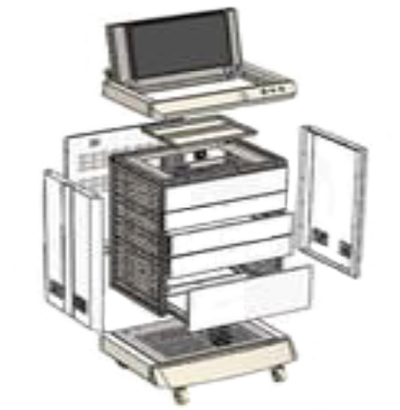Detailing is the most involving phase in the design process. It consumes much time and effort, coupled with documentation is popularly known in design parlance as donkey work, meaning drudgery. But then it is the most essential part of the whole process.
During the phase of the detailed design process, the design engineer has to specify clearly the size, shape, material, tolerances, manufacturing information, and other pertinent information that will allow their design to be realized. There are many areas where critical observations are needed. This phase also involves questioning and reviewing various design parameters.
Size and Shape - Should the part be made bigger, smaller, solid, or hollow? Should the shape be different?
Materials - Which material to be used and why? Which grade of sheets? Material selection has an influence on weight, cost, manufacturability, reliability, etc.
Joinery - What is the mechanism of joining parts together? If the joinery is weak it has an effect on reliability, robustness, safety, and many others.
Manufacturing Processes - Are there better methods of making the part better and cheaper?
User Experience - What will be the user experience? Can it be made more comfortable to use?
Sustainability - Does the product have an adverse effect on the environment?
Maintenance - Has the design taken care of maintenance aspects? How easily can the part be removed and replaced in a short time? Is preventative maintenance required? Is it better to make a more durable part at a higher cost to eliminate recurring maintenance costs?
Life - When does the product become redundant? Are the materials recyclables? Are the materials used are hazardous?
1. Mating of Parts
The most essential part of the design engineering process is to ensure that parts mate with each other to become sub-assemblies with ease and the sub-assemblies mate with each other with ease to become final assembly. The number of parts in a product may vary from just two numbers in a simple product to many in a complex product. It is absolutely necessary to divide the product structure into modules, sub-modules and down to the last part in order to assess ease of mating of parts in a systematic way. Tolerances, type of fixing methods, type of assembly tools, jigs, and fixtures all matters. It is a critical phase where close interaction is required between designer, engineer, and shop floor personnel.
 Parts mating with each other.
Parts mating with each other. Corner detailing.
Corner detailing.2. Joinery
- Minimize joints
- Minimize fasteners
As discussed earlier minimal number of parts and minimal use of fasteners are essential parts of a good design. One can think of the use of tabs, snap fits, press fits, or any other creative means to minimize joins and fasteners to save assembly time and costs thereof.
 Use of tabs.
Use of tabs. Use of hooks.
Use of hooks.
 An example of a product which is assembled without fasteners.
An example of a product which is assembled without fasteners.3. Tolerances

(Image source)
Work out realistic tolerances. There is no need to suggest close tolerances everywhere. For example, there is a difference between +/- 0.5 mm vs +0.5 /- 1.0 mm which will have a bearing on the chain of events ultimately leading to the final cost.


 Joinery Detail.
Joinery Detail.